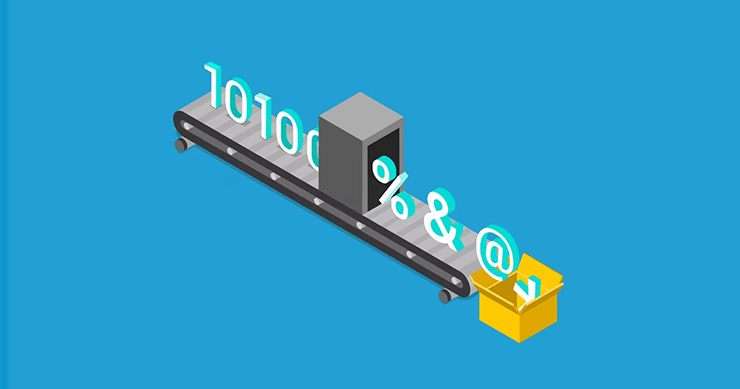What is End-To-End Encryption?
End-to-end encryption (e2ee) is a security measure that ensures that the data exchanged between two parties remains confidential and secure throughout its entire journey. It uses cryptography to protect information from being intercepted during transmission by unauthorized individuals.

How Does E2EE Work?
End-to-end encryption works by encrypting the data at the sender’s end using a specific encryption algorithm and a unique encryption key. The encrypted data is then transmitted over the network and can only be decrypted and accessed by the intended recipient who possesses the corresponding decryption key. The encryption and decryption processes occur exclusively at the endpoints, hence the term “end-to-end encryption.”
The main idea behind end-to-end encrypted messages is that even the service providers or intermediary platforms that are involved in the communication between the two endpoints have no way to decrypt the content. They are only involved in transmitting encrypted data and have no means to decrypt or view understandable content. In this way, e2ee ensures that the said communication or data remains safe, providing confidentiality and protection against unauthorized access.
End-to-end encrypted data is widely used in various applications and services, including messaging platforms, email services, voice and video calls, cloud storage, and file-sharing applications.
Is End-to-End Encryption Safe?
End-to-end encryption is a robust method that ensures the utmost security of your data. By employing this technique, not only are your files and information shielded from hackers, but your privacy is also safeguarded from intrusion by major tech companies. Unlike conventional service providers such as Google (Gmail), Yahoo, or Microsoft, who possess copies of decryption keys granting them access to users’ emails and files, end-to-end encryption guarantees that only the intended recipients can decrypt and access the data, making it inaccessible to any intermediaries, including these service providers.
End-to-end encryption in messaging apps guarantees uninterrupted work for distant and hybrid employees. End-to-end encryption is used by several messaging and VOIP apps to protect online discussions and files.
Does WhatsApp Have End-To-End Encryption?
WhatsApp, as well as Telegram and Signal, does have data encrypted end-to-end. WhatsApp implemented end-to-end security requirements in 2016 as a default security feature for all messages, calls, photos, and videos sent through its platform. This means that when you send a message or make a call using WhatsApp, only the intended recipient can decrypt and access the content, and even WhatsApp itself does not have access to the decrypted data.
End-to-end encryption in WhatsApp works by encrypting the message or media on the sender’s device using a unique encryption key. The encrypted data is then transmitted over the network and can only be decrypted by the recipient’s device, which holds the corresponding decryption key. This ensures that only the sender and recipient can read the content of the messages, and no intermediaries, including WhatsApp, can intercept or access the decrypted data.
Start Getting Value With
Centraleyes for Free
See for yourself how the Centraleyes platform exceeds anything an old GRC
system does and eliminates the need for manual processes and spreadsheets
to give you immediate value and run a full risk assessment in less than 30 days
Which Social Platforms Do Not Use End-To-End Encryption?
Some popular apps, such as LinkedIn, Instagram, Snapchat, and Messenger, do not use end-to-end encryption, so your conversations and files may not be completely secure on them.
Scenario Depicting End-To-End Encryption
Cameron and Beverly want to engage in a private conversation using end-to-end encryption.
Without end-to-end encryption:
Cameron: Hi Beverly, I have a secret to tell you. It’s about our surprise party for Andrew.
Beverly: Oh? I’m excited to hear it!
Evelyn (an eavesdropper): listens in. “Ooooh, I’m going to crash their surprise party.”
Evelyn can easily intercept and understand the conversation between Cameron and Beverly.
With end-to-end encryption:
Cameron: Hi Beverly, I have a secret to tell you. It’s about our surprise party for Andrew. Encryption magic happens!
Encrypted message: q7wR!O7$p8mL9#oN
Evelyn (an eavesdropper): What’s all this gibberish?
Decryption magic happens on Beverly’s device!
Beverly reads: Hi Beverly, I have a secret to tell you. It’s about our surprise party for Andrew.
With end-to-end encryption, the message that Cameron sends to Beverly is transformed into a jumble of characters that cannot be understood by Evelyn or anyone else who intercepts it. Only Beverly’s device holds the key to decrypt the message and reveal its original content.
So, even if Evelyn manages to intercept the encrypted message, she won’t be able to make sense of it without the decryption key that only Beverly possesses. This ensures that Cameron and Bob can have a private conversation without worrying about others listening in or accessing the content of their messages.
Is End-to-End Encryption Symmetric or Asymmetric?
End-to-end encryption is considered asymmetric encryption, also referred to as public-key cryptography. Asymmetric encryption encrypts and decrypts data using two cryptographic keys: public and private keys. The public key is used to encrypt the data, and the private key to decrypt.
Start Getting Value With
Centraleyes for Free
See for yourself how the Centraleyes platform exceeds anything an old GRC
system does and eliminates the need for manual processes and spreadsheets
to give you immediate value and run a full risk assessment in less than 30 days





